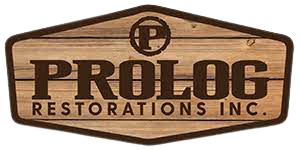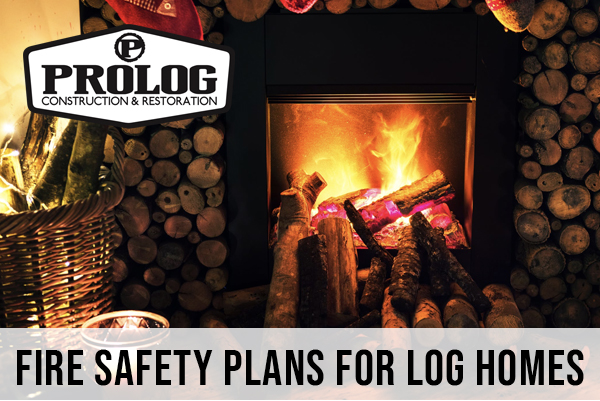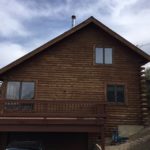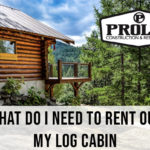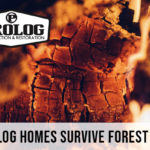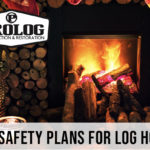Turn on the news and you can see how important it is to have a plan in place when wildfires or forest fires hit. According to the U.S. Forest Service, fire seasons are 78 days longer than in the 1970s. Since 2000, at least 10 states have had their largest fires on record. This year, there have been more than 46,000 fires. Increasing development near forest boundaries also drives up costs, as more than 46 million homes and more than 70,000 communities are at risk from wildfire in the United States.
If you own a log home, whether as a primary residence, weekend getaway, or vacation rental, it’s important to have a plan in place to ensure the survival of your home and your family when disasters strike. As California’s premier log home maintenance, repair and restoration company we’ve worked with many clients over the years to help them prepare for – and recover from – forest fires and wildfires. And we’re sharing some of the best tips we know for planning and protecting your log home and your family when disaster strikes.
- Compose a list of local fire and emergency services phone numbers including a local Cal Fire office. If your log home is a second home, or you own vacation/getaway cabins, keep copies of these lists in all homes for ease of access.
- Sign up for any local agency call lists so you can stay informed and the local police, fire and emergency responders know who to contact in case of emergency and you’re not in residence.
- Identify shut offs for utilities. Mark gas and water shut off valves clearly with paint, reflective tape or flags to help fire officials locate in a hurry.
- Make sure property numbers are clearly posted for fire officials to see.
- Keep access drives to your property free of clutter and clearly marked if it’s in a dark location at night.
- Have an exit route or several routes posted in the home, especially if this is a vacation cabin or rental cabin. Guests may be unfamiliar with the area and how to evacuate if needed.
- Also have all emergency number, radio frequencies, and local gathering places posted.
- Keep a few days of emergency water bottles in storage, along with non-perishable food, flashlights, batteries, and first aid supplies. During the winter, be sure to include blankets, flares, and matches.
- Invest in backup power sources for technology devices.
- Store a small can of gasoline in an approved container in a safe location. Disaster scenarios often mean that gas stations will close, and you’ll need enough gas to get to safety.
- Lastly, if you have to get out in a hurry leave a note on the door or someplace obvious for fire crews to know you’ve left. Let them know if you turned the gas or water off, where the shutoff valves are, and a cell number to contact you if needed.
- Have a plan for communicating during an emergency. While local cell networks get overloaded, long-distance calls can often go through when local ones do not. Ask an out-of-town friend or family member to be the main contact for everyone to check in, in case family members are separated.
More fire safety information can be found at the California Dept. of Forestry and Fire protection website HERE. If you own a log home or log cabin and would like to learn more about protecting your log home from forest fires, or assessing damage after a fire has passed through, Prolog Restoration can help at 877-477-6564.
